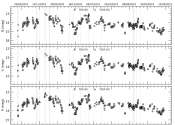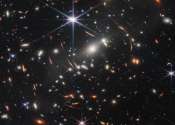AI helps distinguish dark matter from cosmic noise
Dark matter is the invisible force holding the universe together—or so we think. It makes up about 85% of all matter and around 27% of the universe's contents, but since we can't see it directly, we have to study its gravitational ...









